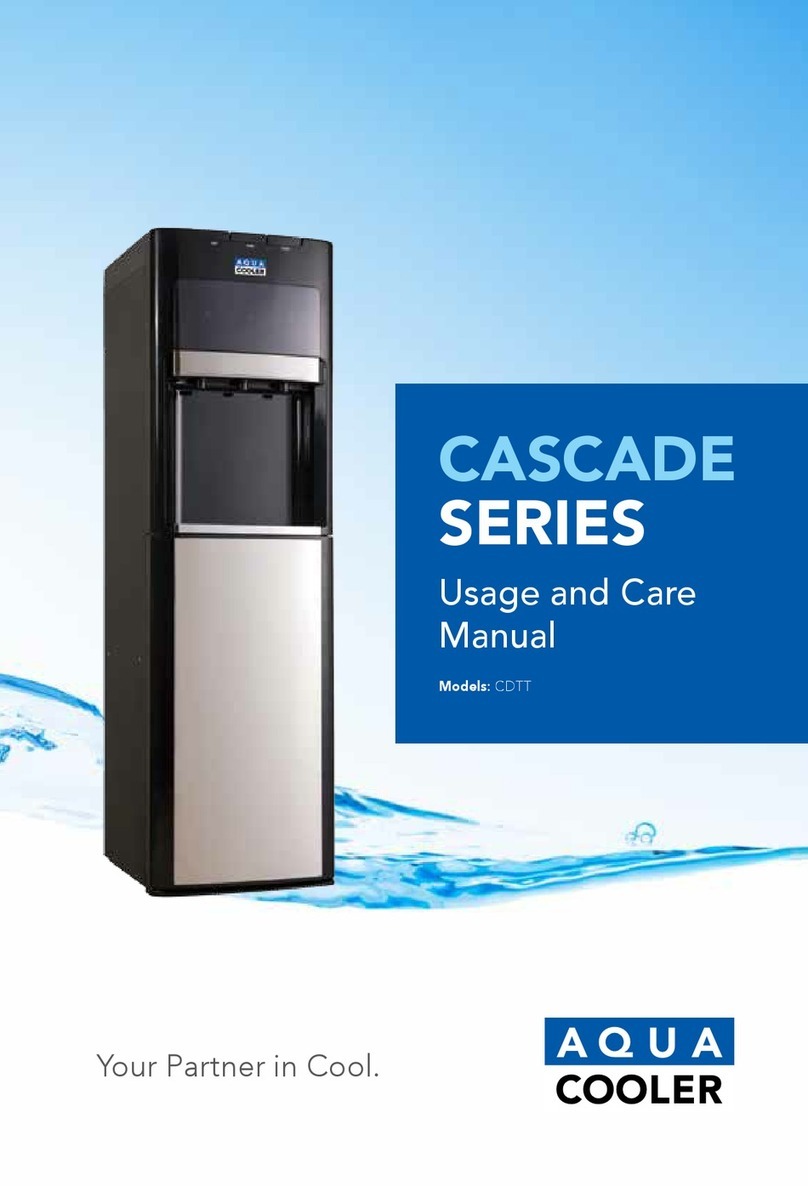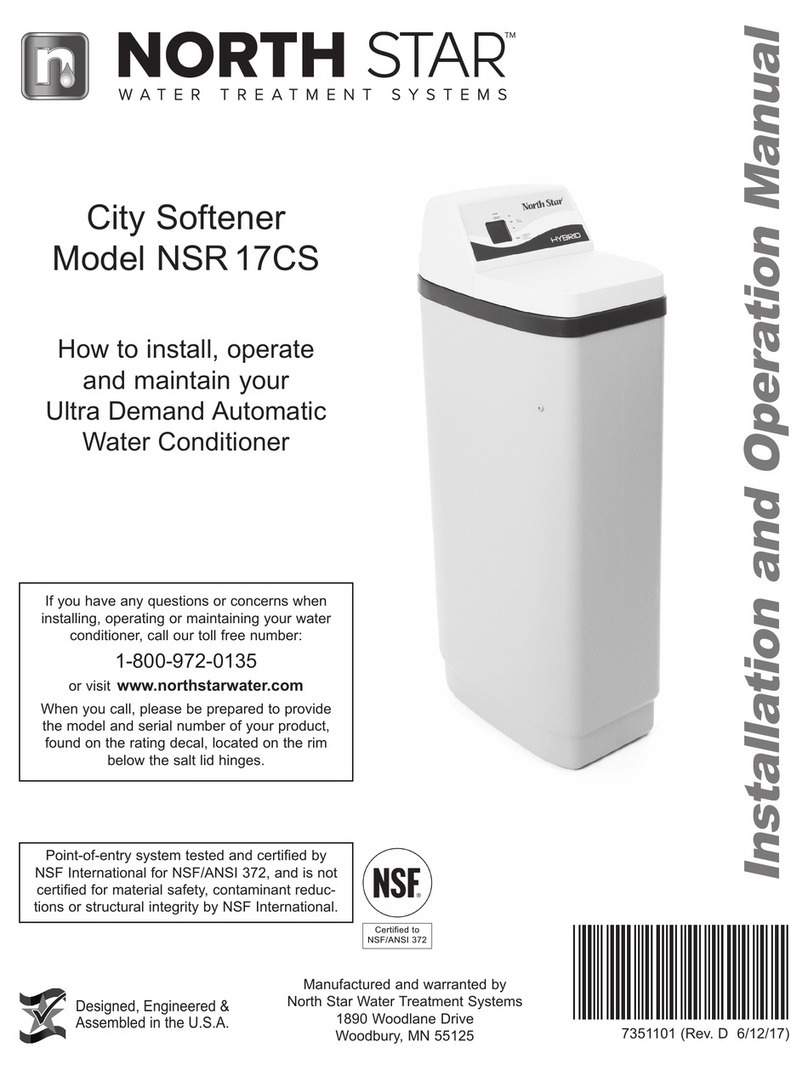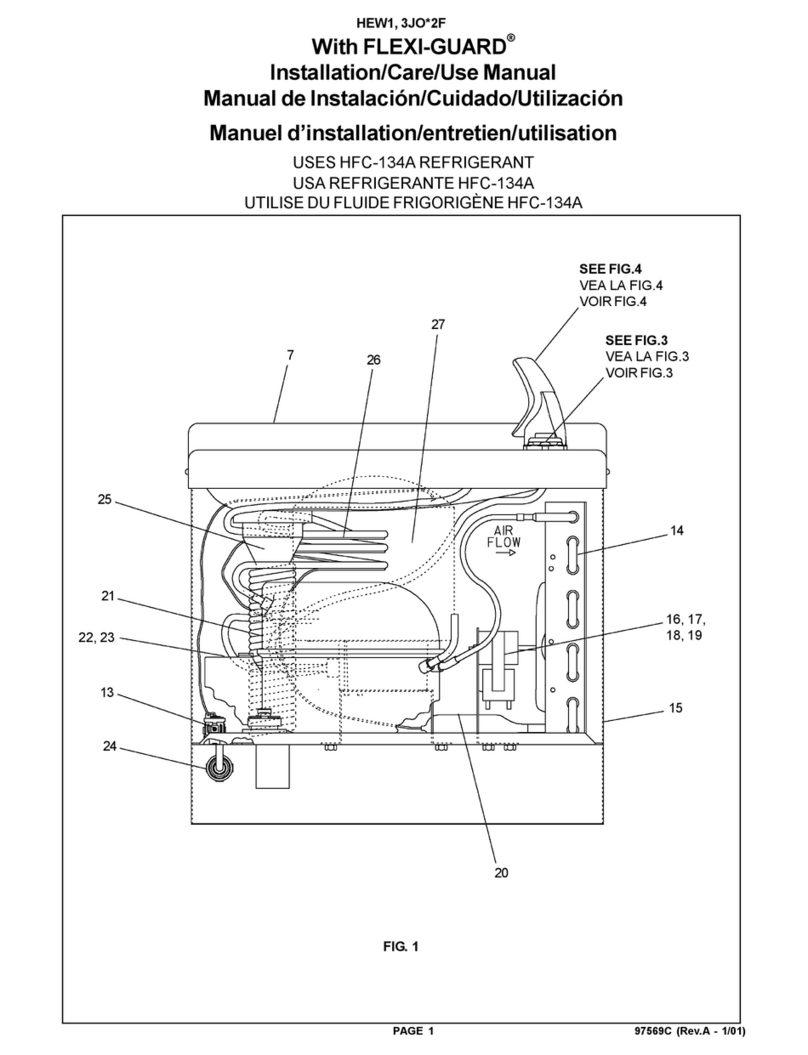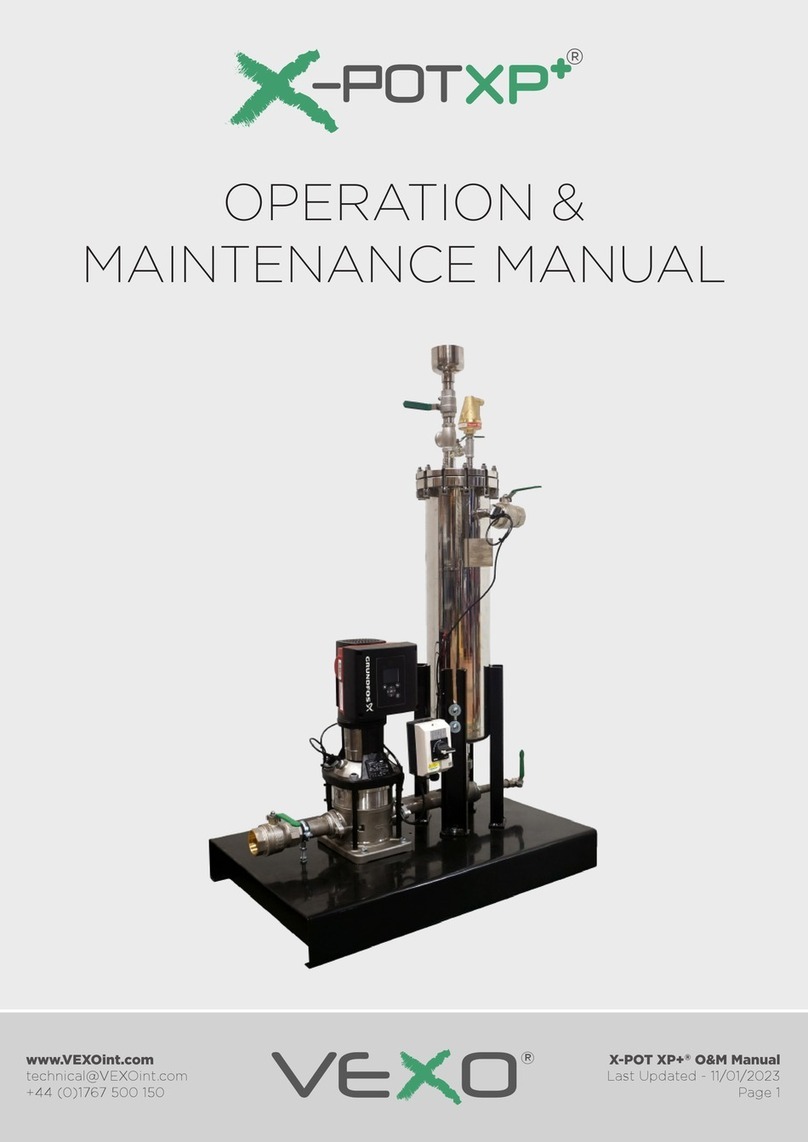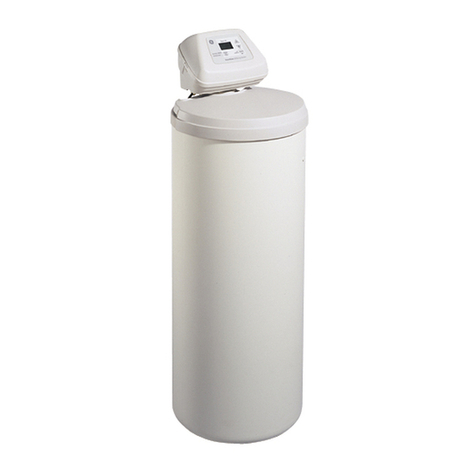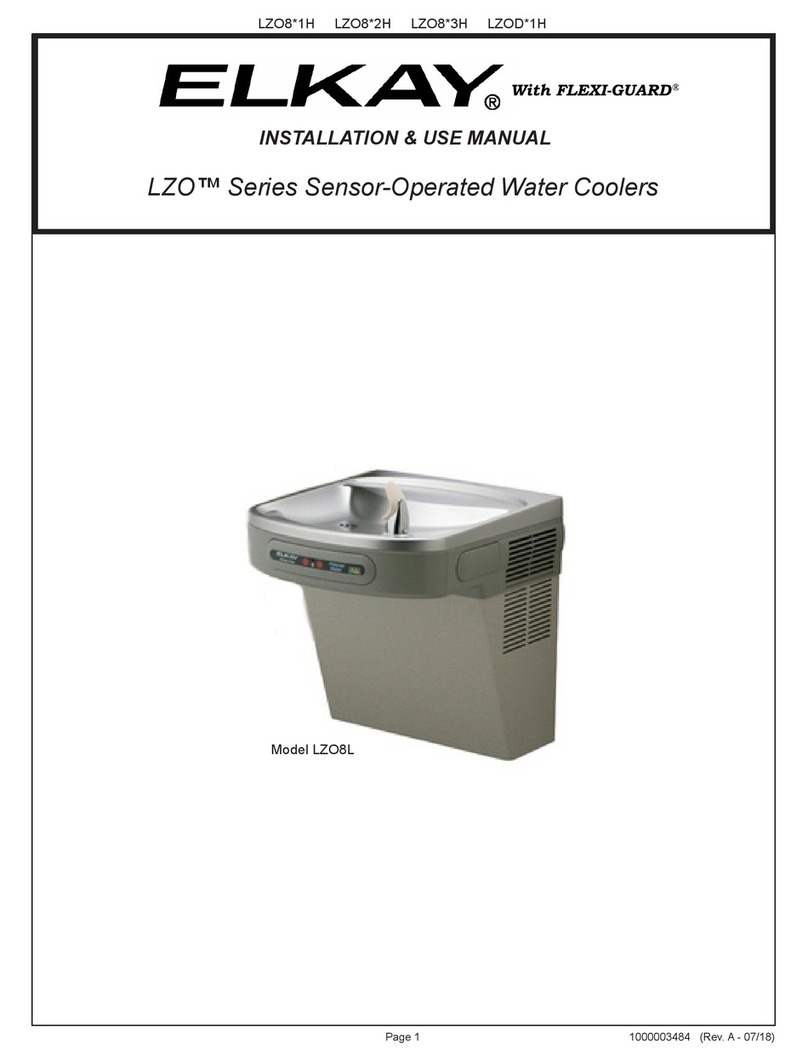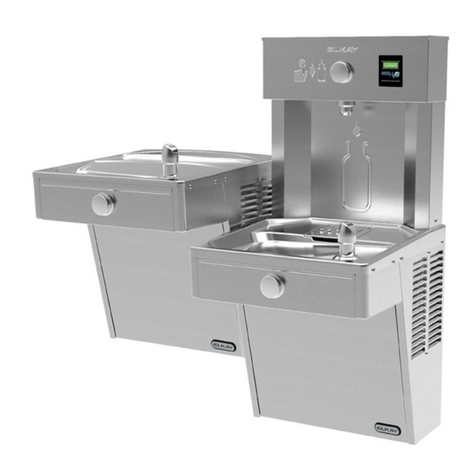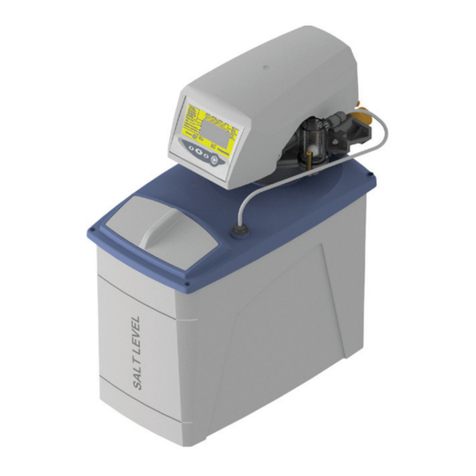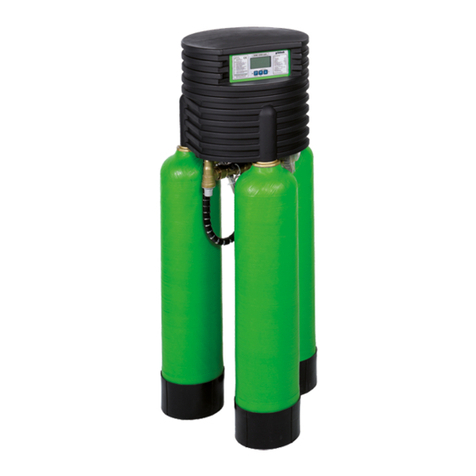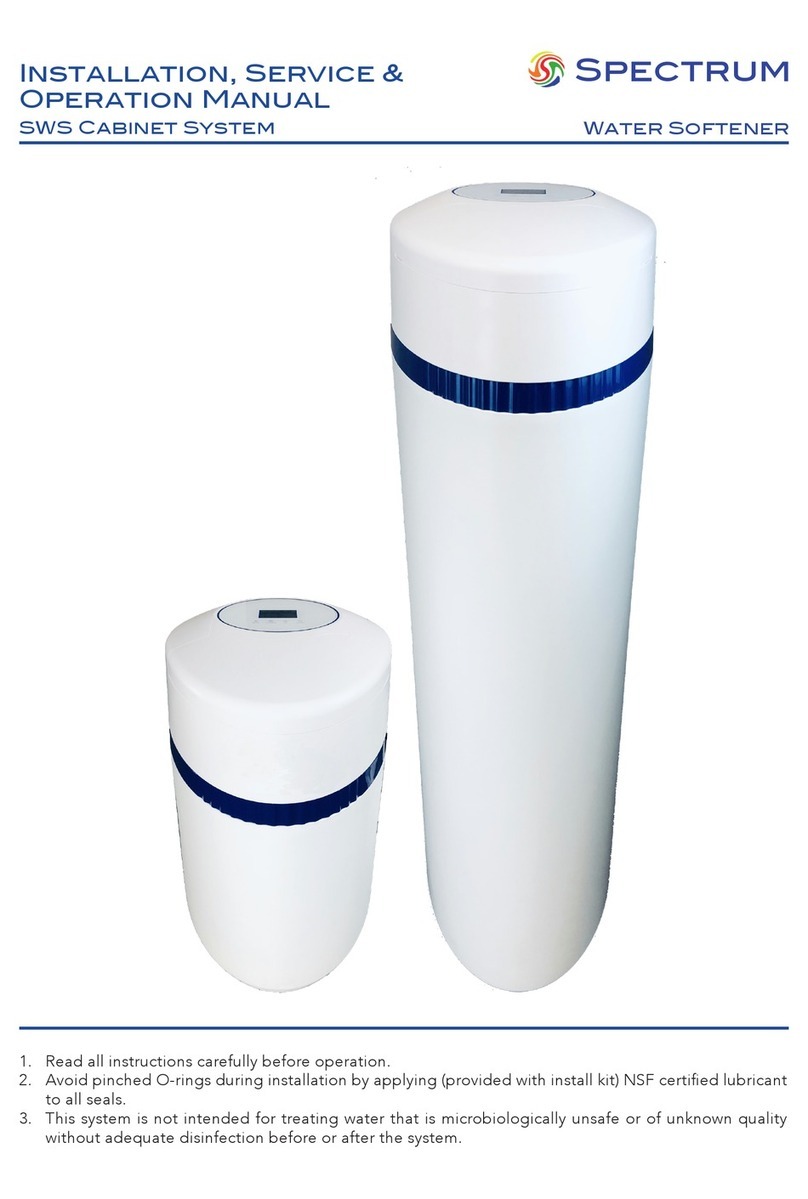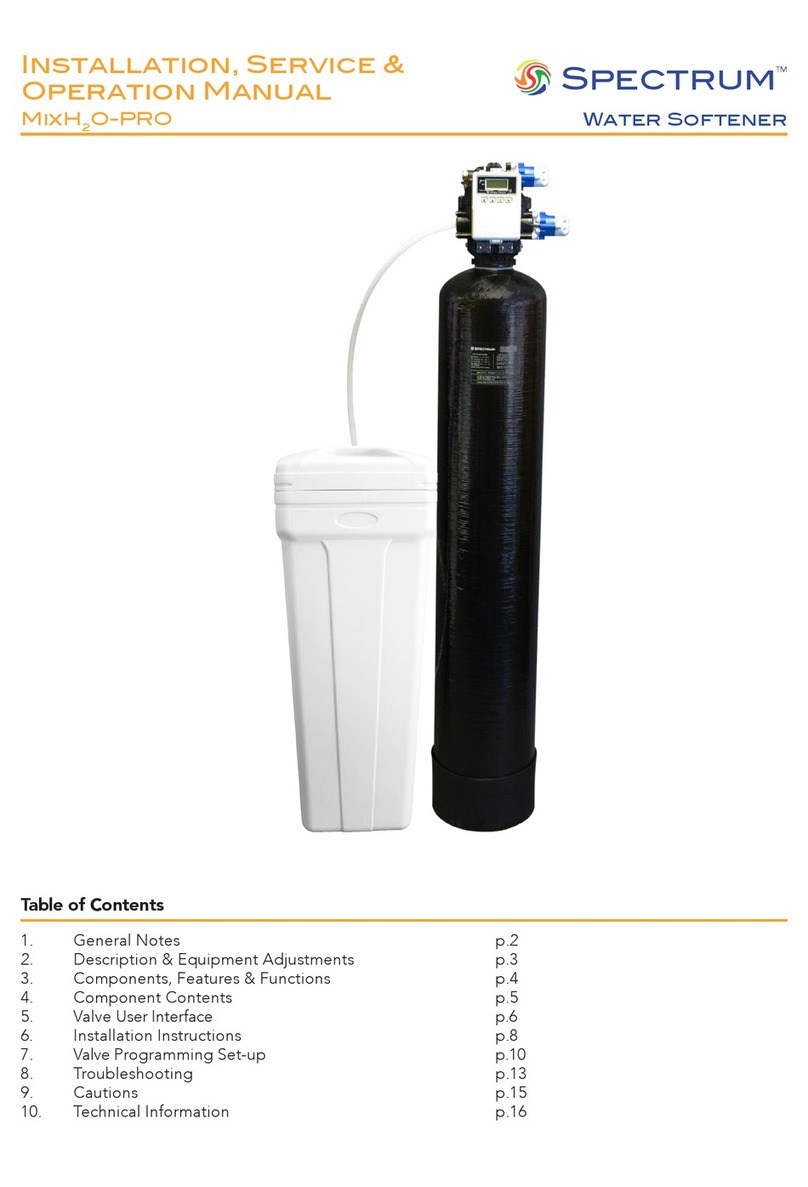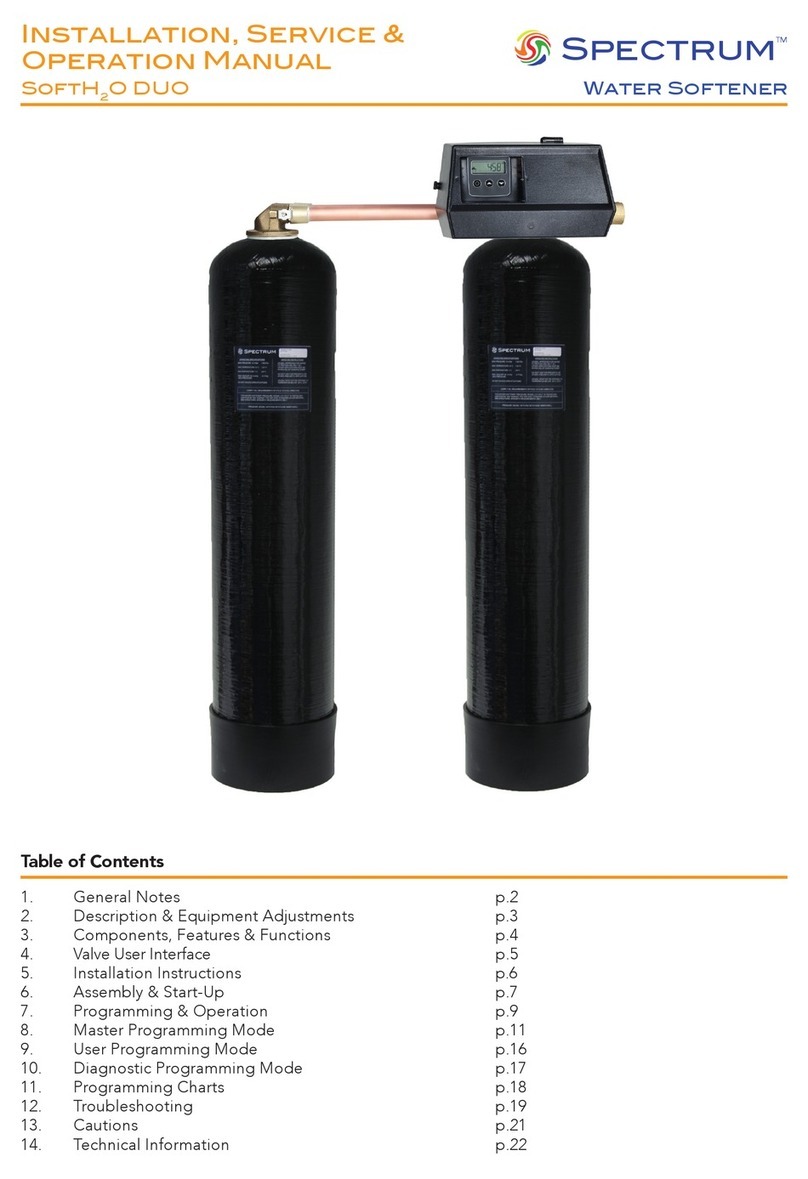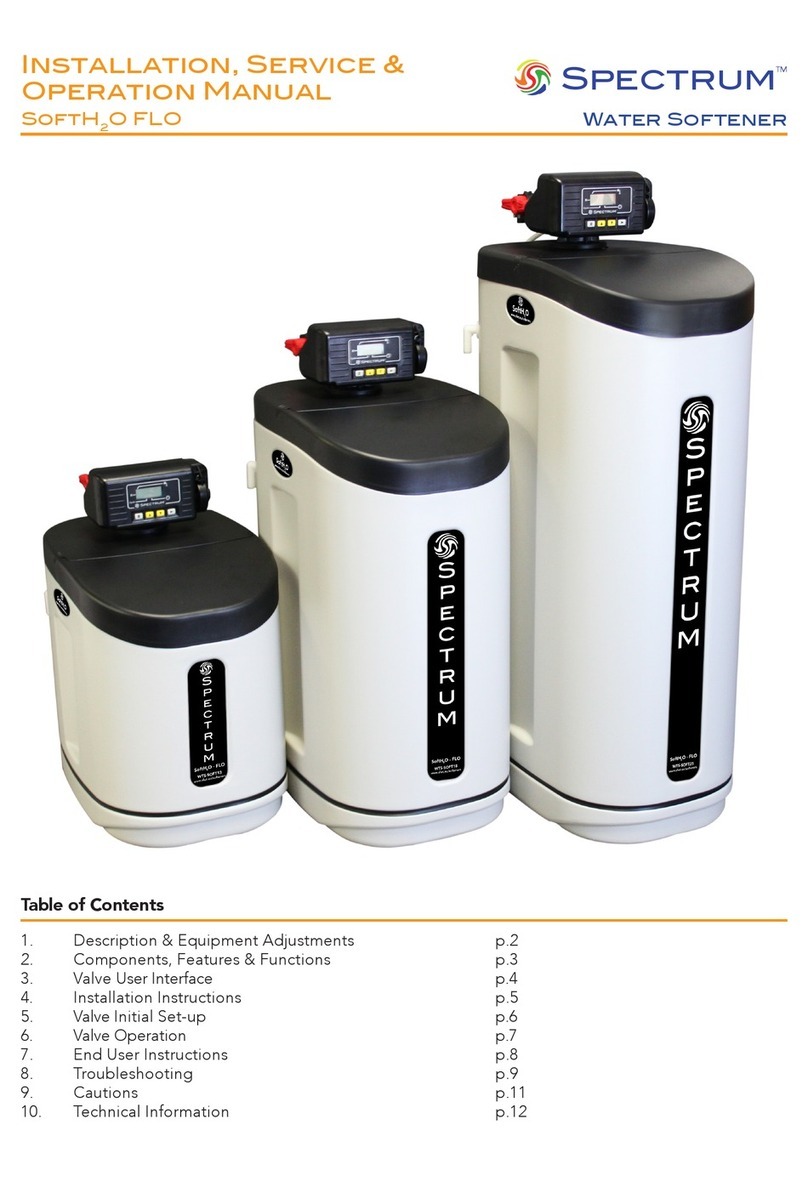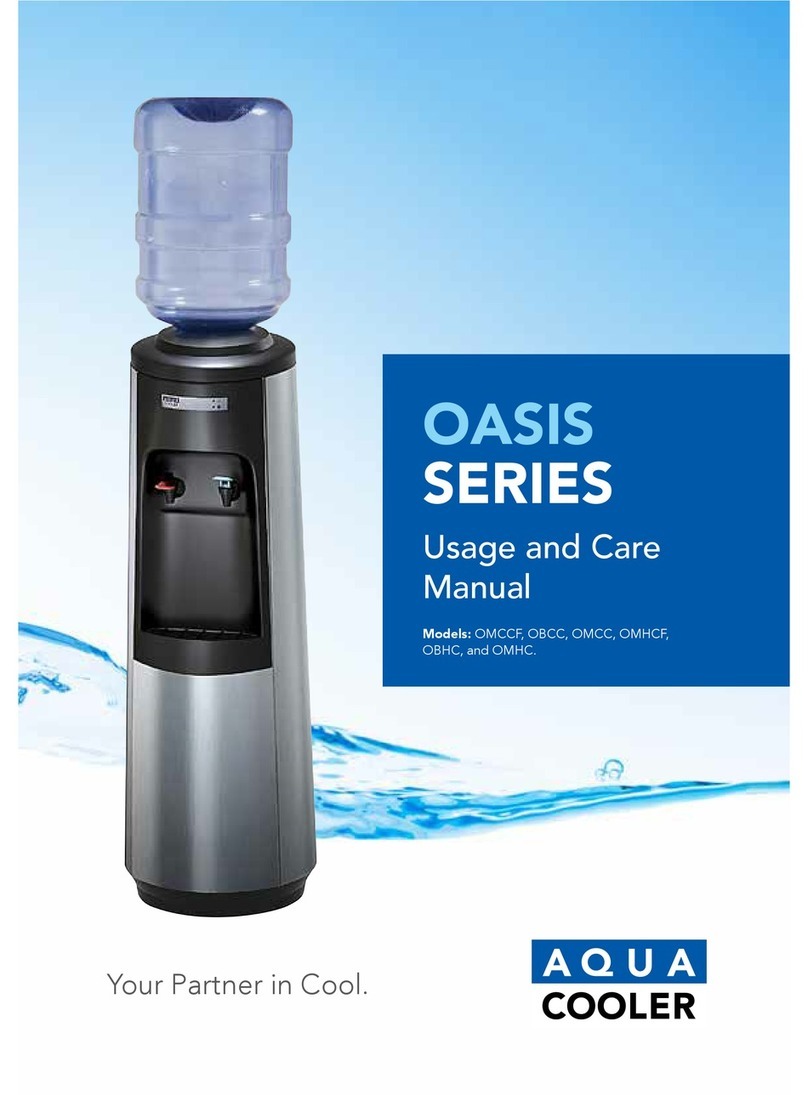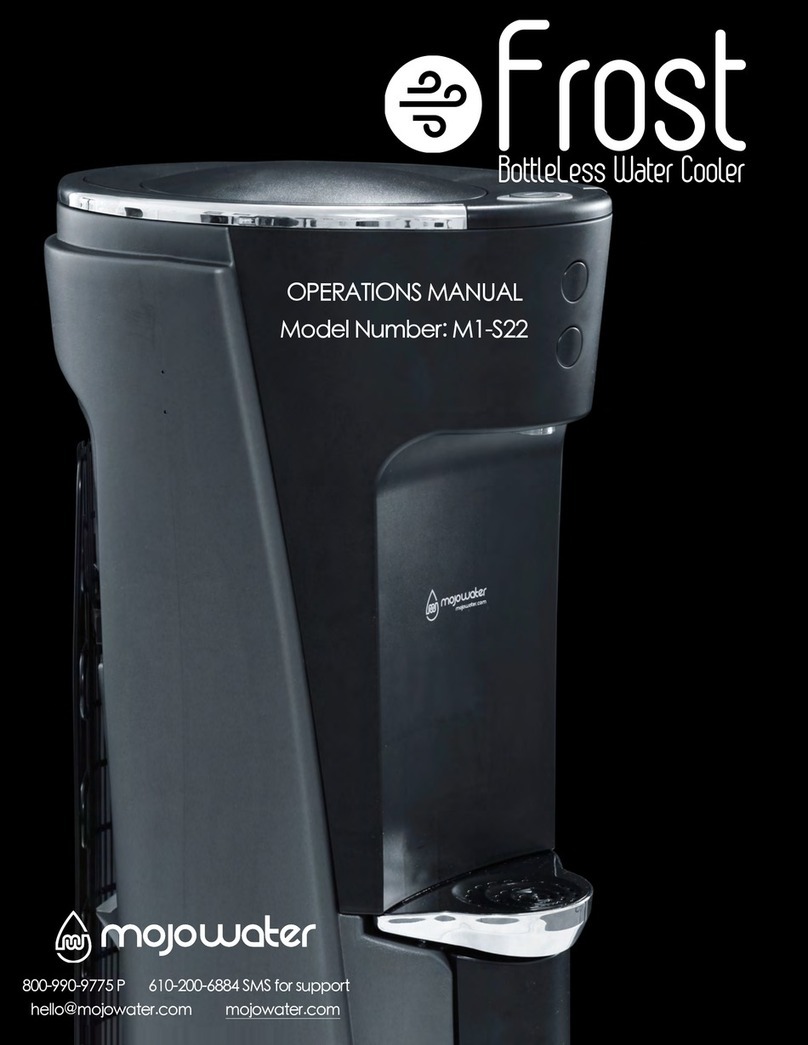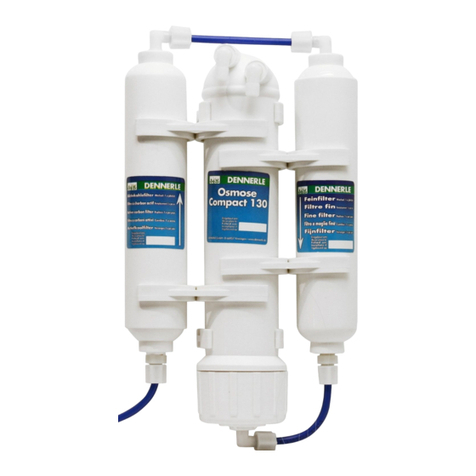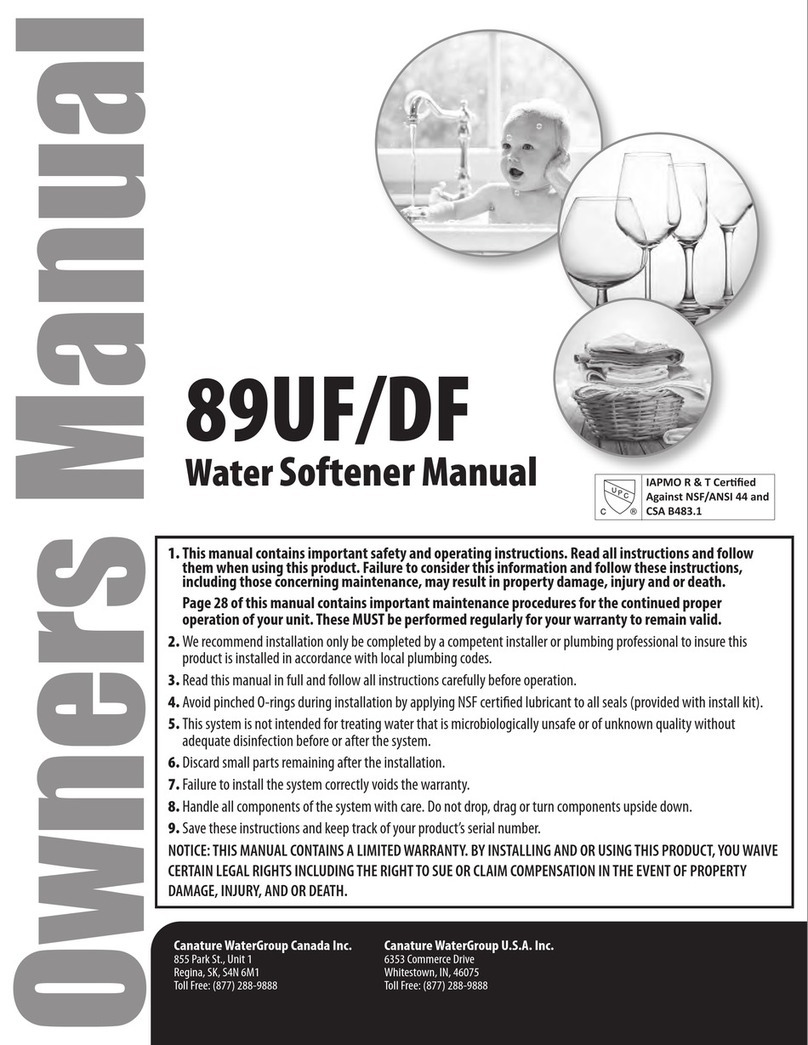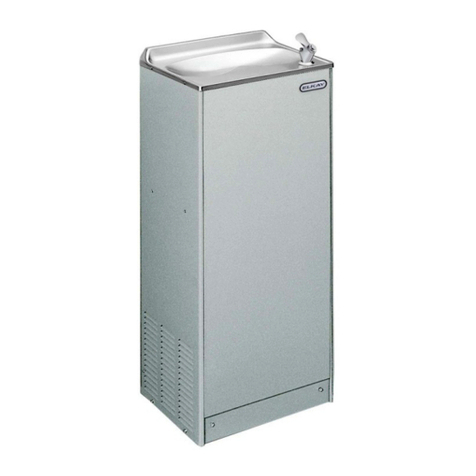Symptoms Possible Causes Corrective Action
Low Inlet Pressure
Low supply pressure Increase inlet pressure
Cartridge lters plugged Change lters
Solenoid valve malfunction Replace solenoid valve and/or coil
Motor may not be drawing correct current Use clamp-on amp meter to check motor amp draw
Concentrate valve might be damaged Replace needle valve
Leaks Fix any visible leaks
Low Permeate Flow
Low inlet ow Adjust concentrate valve
Cold feed water See temperature correction sheet
Low operating pressure See low inlet pressure
Defective membrane brine seal Inspect and/or replace brine seal
Fouled or scaled membrane Clean membranes
High Permeate Flow
Damaged product tube O-rings Inspect and/or replace
Damaged or oxidised membrane Replace membrane
Exceeding maximum feed water temperature See temperature correction sheet
Poor Permeate Quality
Low operating pressure See low inlet pressure
Damaged product tube O-rings Inspect and/or replace
Damaged or oxidised membrane Replace membrane
Membrane Fouling
Metal oxide fouling Improve pretreatment to remove metals.
Clean with acid cleaners
Colloidal Fouling Optimise pretreatment for colloid removal.
Clean with high pH anionic cleaners
Scaling (CaSO4, CaSO3, BaSO4, SiO2)
Increase acid addition and antiscalant dosage for CaVO3and
CaCO4.
Reduce recovery. Clean with acid cleaners.
Biological fouling
Shock dosage of Sodium Bi-Sulfate.
Continuous feed of Sodium Bi-Sulfate at reduced pH.
Chlorination and de-chlorination. Replace cartridge lters
Organic fouling Activated carbon or other pretreatment.
Clean with high pH cleaner.
Chlorine oxidation Check chlorine feed equipment and de-chlorination system.
Abrasion of membrane by crystalline material Improve pretreatment.
Check all lter for media leakage.
Troubleshooting
Abnormal Permeate Flow
Permeate ow should be within 20% of the rated production, after correcting the feed water temperatures
above or below 25°C. Check the permeate ow meter to determine the permeate ow rate.
NOTE: To determine the temperature correction factor, locate the temperature correction
table in this manual and follow the directions.
!




















